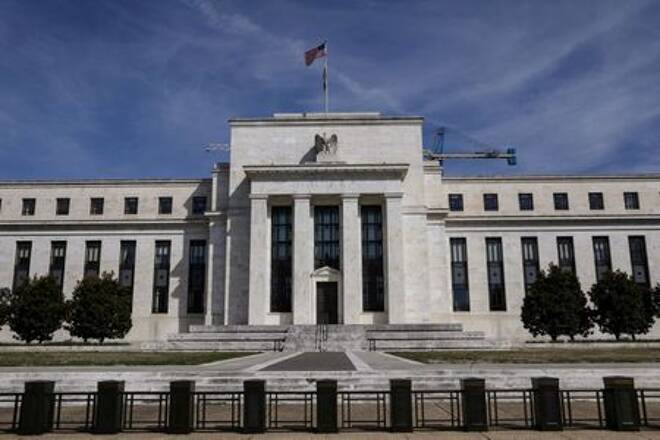Advertisement
Advertisement
Analysis: Market Feels Like ‘Coiled Spring’ After Fed
By:
NEW YORK (Reuters) - Investors are closely watching how fast U.S. Treasury yields may rise after a key U.S. Federal Reserve meeting where the central bank reiterated loose policies that are likely to help boost even more growth and inflation.
By Karen Brettell and Kate Duguid
That’s a key issue for both investors and Fed officials who would rather not have to ride out another bout of bond market volatility as a growing body of indicators suggests U.S. growth is poised to take off this year.
On Thursday, U.S. Treasury yields spiked to a 14-month high and the yield curve steepened to its highest since 2015, which followed a relatively muted reaction on Wednesday.
A surge higher in yields would raise borrowing costs for companies and consumers, and could ripple across other assets such as equities.
“To me it feels like it is a coiled spring,” said Mark Cabana, head of U.S. rates strategy at Bank of America. The Fed “is signaling that it wants to see an overshoot, it wants to see inflation and employment run quite hot.”
The Fed’s stance also “does raise some risks that whenever we do begin to hear a shift in tone from the Fed that there may be a bit more of a rapid adjustment in the market,” Cabana said.
Fears of sooner-than-expected rate hikes, or tapering of the Fed’s asset purchases, in recent weeks have helped to send yields on longer-dated Treasury yields to the highest in a year prior to the meeting.
The benchmark 10-year Treasury yield rose to a high of 1.689% prior to the Fed’s statement following the close of its policy meeting on Wednesday, its highest since January 2020. It later fell to around 1.646%, but on Thursday vaulted above 1.74% for the first time since January 2020.
Two-year note yields, which are the most sensitive to interest-rate policy, dropped as low as 0.125% after the Fed meeting before bouncing back to 0.137%. On Thursday those notes edged 1.4 bps higher at 0.143%.
That meant the spread between the two- and 10-year rates – the most common measure of the yield curve – widened to 157.6 basis points. [nL8N2LG2R1]
While long-term rates are likely to continue their march upward in line with better economic projections and rising Treasury supply, the question is over how fast they move.
The Fed “has now calmed down potential market anxiety about a taper tantrum, and I think it buys time and paves the way for financial conditions to remain relatively loose and for the recovery to gather pace,” said Daniel Ahn, chief U.S. economist and head of markets 360 North America at BNP Paribas.
The 2013 taper tantrum saw bond yields rise dramatically after then-Fed Chair Ben Bernanke told lawmakers the Fed could take a step down in its pace of purchases of assets that had been propping up markets.
The Fed’s message on Wednesday was that rates are not rising in a hurry even though it sees the U.S. economy rising 6.5% this year, unemployment falling to 4.5% by year-end and the pace of price increases exceeding the Fed’s 2% target, at least temporarily. Powell noted the “strong bulk” of the policy-setting committee anticipates no interest rate increase until at least 2024.
“The chairman has been quite clear that he’s happy about the pace of recovery increasing, but that doesn’t change their framework and it certainly isn’t going to force their hand to tighten policy sooner than they deem necessary,” said Michael Lorizio, senior fixed income trader at Manulife Investment Management in Boston.
Indeed, Powell could be comfortable with a steeper yield curve that bolsters private banking, said Venk Reddy, chief investment officer, Zeo Capital Advisors.
“I don’t see how we don’t end up with a very steep upward sloping yield curve over the course of time here,” Reddy said.
(Reporting by Karen Brettell and Kate Duguid; editing by Megan Davies, Leslie Adler and Alexandra Hudson)
About the Author
Reuterscontributor
Reuters, the news and media division of Thomson Reuters, is the world’s largest international multimedia news provider reaching more than one billion people every day. Reuters provides trusted business, financial, national, and international news to professionals via Thomson Reuters desktops, the world's media organizations, and directly to consumers at Reuters.com and via Reuters TV. Learn more about Thomson Reuters products:
Did you find this article useful?
Latest news and analysis
Advertisement
